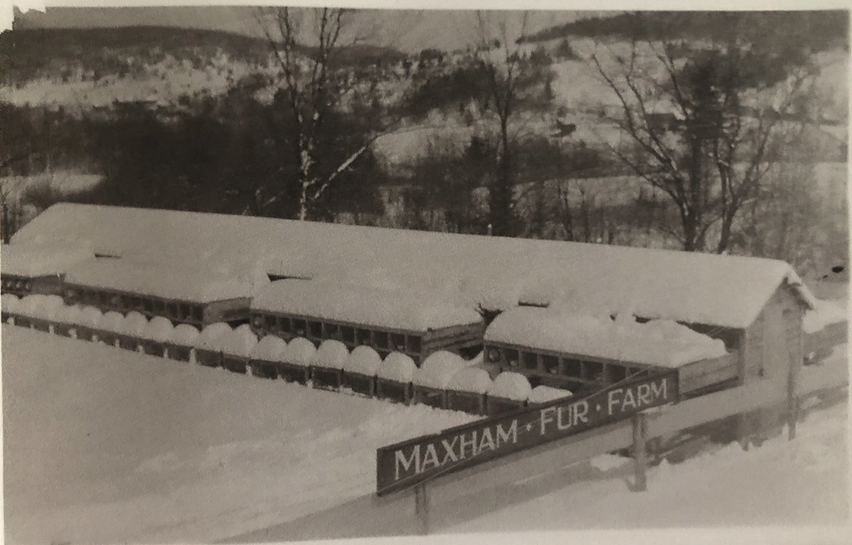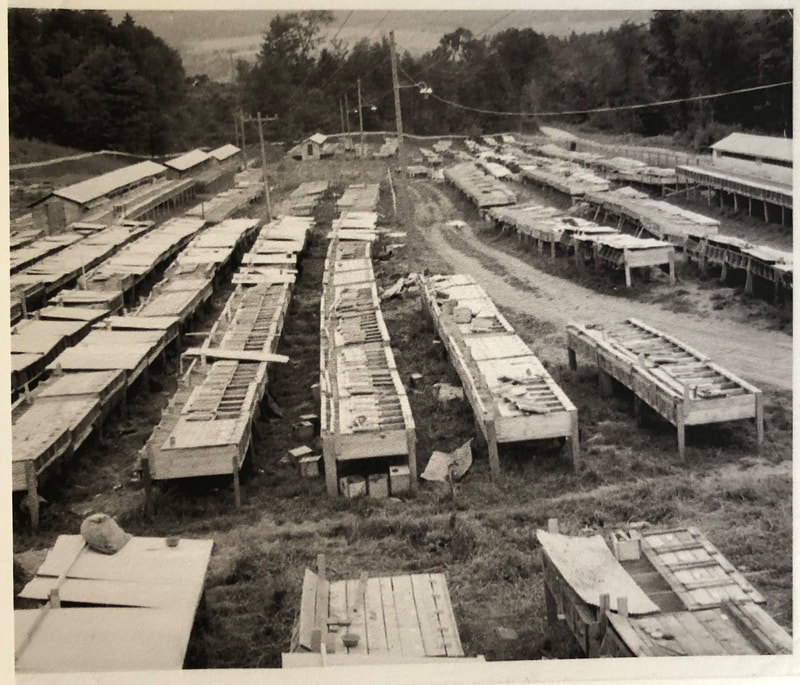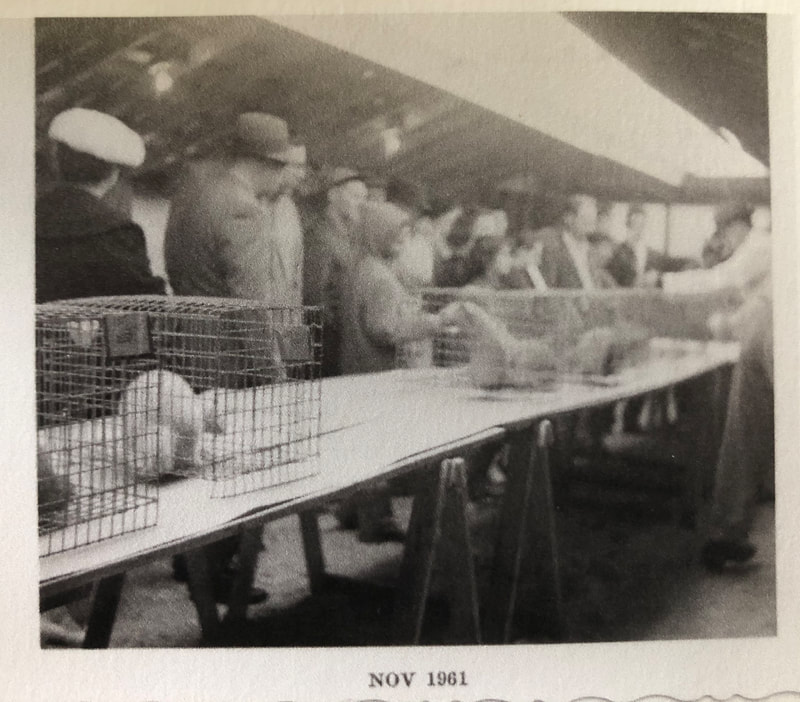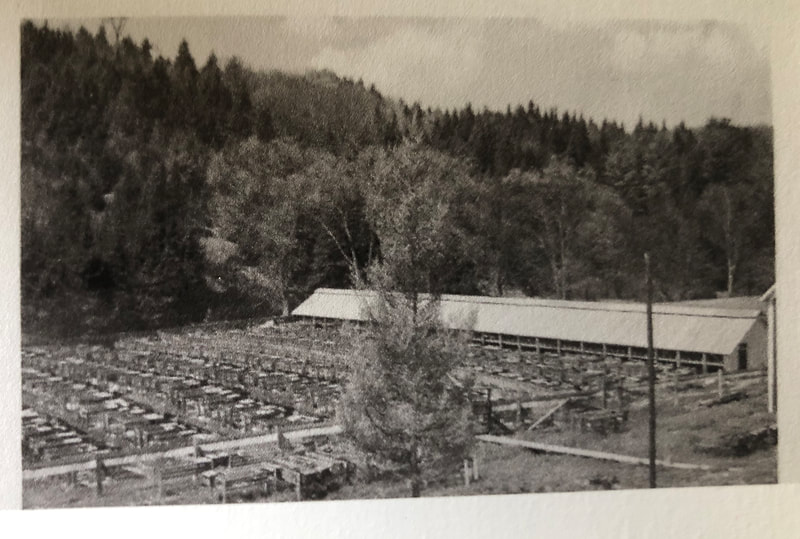Maxham Fur Farm
Mink Ranching in Worcester, Vermont
Background of Maxham Fur Farms - Earl Maxham founder and operator
1926
Earl Maxham begins selling mink food ingredients and supplements to mink ranchers.
1927
The first ranch mink arrive in Worcester.
Earl Maxham buys the property, now owned by Dolly Richardson, at the junction of Rt-12 and Minister Brook Road for a mink
ranch.
1930's
Maxham Fur Farm expands to two new locations on Minister Brook Rd.
Maxham Supply Co. is formed to process and supply frozen mink food to other ranchers.
Earl Maxham encourages and assists others to raise mink through out Vermont. He sells mink breeding stock as well as mink
food.
1935
Earl Maxham begins to purchase property for lumbering.
1936
Minor creamery purchased and used for mink food manufacturing. New freezers are constructed and processing area
developed in the old Minor creamery.
1937-1941
New hazards of mink raising are encountered.
Canine distemper appears.
Out-break of World War II weakens market for mink pelts.
1946-1960
The post World War II years see the mink ranching business prosper with many new mutations colors being developed. The fur
quality and the size of the mink improve as better nutritional standards are developed.
World-wide mink pelt production is making big gains.
Earl Maxham buys interest in a whaling operation in Newfoundland. The meat is a new source of protein for mink ranchers.
Earl Maxham sets up a mink ranch in Newfounland.
1960-1970
The mink business flounders as anti-fur groups stage protests against the industry. This period flows into a period of
overproduction, lowering of pelt prices and increasing costs.
The Maxham family stopped mink ranching in the fall of 1970.
The years the Maxham family raised mink saw many color phases develop in the mink industry. The Maxham ranch was built around quality black mink. In addition to blacks, we raised white, pastel, sapphire, pearl, violet and Aleutian mink. These so called high color animals were frequently double and triple recessive. These mink were difficult to raise in that they had a poor kit average and high mortality rate.
The Maxham Family - An excerpt from "The Cow That Tried To Swallow A Potato" A Quirky History of Worcester, Vermont
Mink Ranching in Worcester, Vermont
Background of Maxham Fur Farms - Earl Maxham founder and operator
1926
Earl Maxham begins selling mink food ingredients and supplements to mink ranchers.
1927
The first ranch mink arrive in Worcester.
Earl Maxham buys the property, now owned by Dolly Richardson, at the junction of Rt-12 and Minister Brook Road for a mink
ranch.
1930's
Maxham Fur Farm expands to two new locations on Minister Brook Rd.
Maxham Supply Co. is formed to process and supply frozen mink food to other ranchers.
Earl Maxham encourages and assists others to raise mink through out Vermont. He sells mink breeding stock as well as mink
food.
1935
Earl Maxham begins to purchase property for lumbering.
1936
Minor creamery purchased and used for mink food manufacturing. New freezers are constructed and processing area
developed in the old Minor creamery.
1937-1941
New hazards of mink raising are encountered.
Canine distemper appears.
Out-break of World War II weakens market for mink pelts.
1946-1960
The post World War II years see the mink ranching business prosper with many new mutations colors being developed. The fur
quality and the size of the mink improve as better nutritional standards are developed.
World-wide mink pelt production is making big gains.
Earl Maxham buys interest in a whaling operation in Newfoundland. The meat is a new source of protein for mink ranchers.
Earl Maxham sets up a mink ranch in Newfounland.
1960-1970
The mink business flounders as anti-fur groups stage protests against the industry. This period flows into a period of
overproduction, lowering of pelt prices and increasing costs.
The Maxham family stopped mink ranching in the fall of 1970.
The years the Maxham family raised mink saw many color phases develop in the mink industry. The Maxham ranch was built around quality black mink. In addition to blacks, we raised white, pastel, sapphire, pearl, violet and Aleutian mink. These so called high color animals were frequently double and triple recessive. These mink were difficult to raise in that they had a poor kit average and high mortality rate.
The Maxham Family - An excerpt from "The Cow That Tried To Swallow A Potato" A Quirky History of Worcester, Vermont
Proudly powered by Weebly









